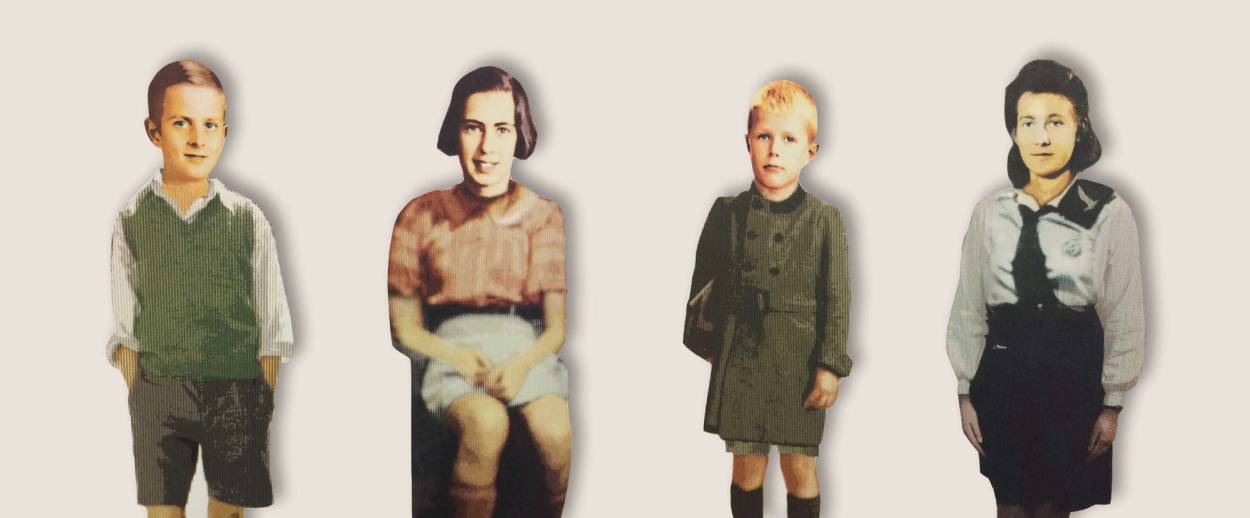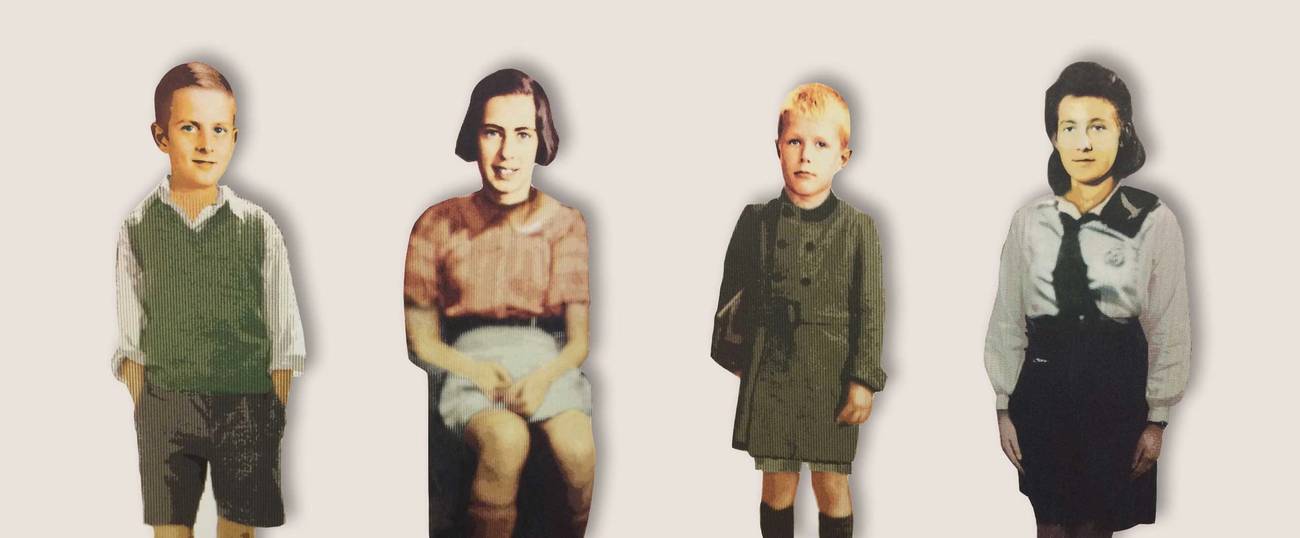The Best WWII Children’s Museum You’ve Never Heard Of
Amsterdam’s Dutch Resistance Museum Junior offers spectacular interactive education




My family spent Thanksgiving in Amsterdam. We stayed in the Jordaan neighborhood, two blocks from Otto Frank’s old warehouse. Every night, we went to sleep to the sound of ringing church bells. Anne Frank used to listen to them, too. (On July 11, 1942, she wrote in her diary: “Father, Mother and Margot still can’t get used to the chiming of the Westertoren clock, which tells us the time every quarter of an hour. Not me, I liked it from the start; it sounds so reassuring, especially at night.”) Of course we took the Anne Frank House tour. Of course it was powerful. I’d last visited in the early ’90s; since then the museum has been thoughtfully expanded and renovated. My older daughter, Josie, 16, found the visit particularly potent, though she and I both made a quiet snorting noise when the tour concluded with a quote from bestselling young-adult novelist John Green.
To our surprise, however, a different museum wound up being even more powerful for both my daughters. The Verzetsmuseum, aka the Dutch Resistance Museum, has a large section aimed entirely at kids. If you’re visiting with your family, skip the main exhibit, dedicated to the Netherlands’ experience during the war, and go straight to Dutch Resistance Museum Junior, further back in the building. It is practically a Ph.D.-level course in effective museum design for kids—interactive without being infantilizing, engaging without being pandering, thoughtful about how young kids experience narrative, reflective about how much historical scariness young museumgoers can be expected to handle. Maxine, 13, was spellbound. As we left, after two hours that positively flew by, Josie gave it the highest rating an ironic hipster teen can give: “Mom. That museum was fire.”
You can get a sense of the space on the museum website. A large central area paneled with textured murals and filled with models of tree stumps, munitions crates, and suitcases (some of which actually open into plush upholstered chairs) introduces us to four kids: Eva, Jan, Nelly, and Henk. We see videos of each kid; a headset lets you hear them tell their own stories in the language of your choice. Eva is a Jewish girl whose family has fled Austria for (presumed) safety in Amsterdam. Jan is a minister’s son whose father preaches opposition to the Nazis. Nelly is the daughter of a small-town mayor in the southwest Netherlands, a fervent member of the Dutch Nazi party. Henk lives in Haarlem, loves his little toy soldiers, and sees war as a thrilling adventure—he’s giddily delighted every time the Germans open fire on British planes overhead because afterward he finds bits of shrapnel, bullets, and broken glass to add to his collection. (“I don’t think Henk is very smart,” Maxie confided.) Gradually, like the other children, Henk begins to understand the magnitude of war.
From the center room, you can follow each young narrator’s story through a warren of other little rooms—bedrooms, dining rooms, train cars—all filled with audio and video recordings, furniture, and screens you can touch to answer questions about what you’d do in each child’s situation. As you weave through each kid’s wartime story, examining their toys and hats and posters, watching clever bits of animation showing their day-to-day lives, you also move through four different experiences of resistance, oppression, and collaboration.
Eva, for example, tells us she lives around the corner from Anne Frank. She really likes Anne’s cat Moortje, but finds Anne (“a popular girl”) shallow and annoying. “She and her friends were always giggling about boys…I thought it was stupid,” she says dismissively. Both my daughters burst into shocked giggles at that; who’d ever expect to hear criticism of such an icon?
As the Nazi hold on the Netherlands tightens, we experience it through each kid’s lens. Eva is sad because isn’t allowed to go see Snow White; Jews can’t go to the movies anymore. Her beloved big brother Heinz draws her a picture of Snow White on the blackout paper covering the windows. Winter coats hang on hooks, each with a yellow star saying “Jood” stitched on it. There’s a café window with a small sign in the corner: “Verboden Voor Juden.” When the family has to go into hiding—Vati and Heinz in Soesdjik, Mutti and Eva in Amsterdam—we see a video of Eva’s hands making shadow animals on the ceiling, her idle fantasies of being able to ride a bike again (flowers bloom around the bike as she imagines it) and getting to dance like Shirley Temple, which she’s no longer allowed to do because she can’t make noise. “BORING!” the wall text huffs. We see sad-looking paintings by Heinz, poems, postcards. We hear bits of radio broadcasts. A righteous gentile hides Eva and her mom in a small space behind a false wall with a hatch next to the toilet—it’s even more stark-looking than the bookcase that swung out to reveal steps to the Franks’ Secret Annex.
Eventually, all four family members are captured and sent to Auschwitz. A video impressionistically shows us the cattle-car journey and Eva’s newly tattooed arm.
Among the four kids’ stories in the museum, Eva’s is the most tragic. Not everyone in her family survives. Nevertheless, her experience is presented in a way that’s manageable for children. I was endlessly admiring of this museum’s balancing act. Parents still may have to do some explaining, especially to younger kids (and I don’t think kids younger than 8 or 9 are emotionally ready for this experience at all), but the storytelling is developmentally appropriate for most kids older than 9. Regular readers know how critical I am of most Holocaust narratives for kids; this one really is spectacularly done.
At the end, you come out into a big open room—called Liberation—and are confronted with big photographic portraits of Eva, Jan, Nelly, and Henk as elderly folks. (Until the final room, I hadn’t been positive that the four were real people.) All had survived. I gasped, and tears came to my eyes. Something about suddenly seeing them as wrinkly old folks, with kind bubbe-and-zayde-like faces, when we’d only ever known them as children, felt at once jarring and consoling.
All four took different lessons from the war. An interactive display lets you watch snippets of interviews with them as adults on topics such as prejudice, dictatorship, the meaning of freedom. You can also write your own thoughts about war and intolerance on bits of paper all over the walls. (I took a picture of a carefully printed, blue-penciled note, in little-kid writing, the vowels dotted with circles. It read, “Hitler Is Gewoon Stom Dom”—“Hitler is just stupid” in Dutch. Beneath it was the word “Hitler” in a circle, crossed out, and a picture of a hand pointing thumbs-down. Take that, Hitler.
What I found most striking in that last room: Nelly never feels bad for her leadership in the Youth Storm movement or for her father’s role in the Dutch Nazi party. She sees herself as a victim, dwelling on being called “Nazi scum” by her classmates and being forced to flee to Germany with her family as the British and American armies approach the Netherlands. Eventually, she and her family are held accountable for their actions…but at no point does Nelly take responsibility. Even as an 86-year-old, she insists she had no idea what was happening to the Jews and doesn’t feel guilty about her family’s wartime activities. What did she learn from her experiences? “You shouldn’t tease others because they are different,” she says in an interview as a grownup. “I personally experienced what it is like to be different and I would not wish that on anyone else.” She sounds like today’s parade of racists and homophobes: “What about the prejudice I experience as a conservative? What about respecting my values?” I loved that the museum presented her perspective without comment or censure. It felt like a sophisticated, non-pandering choice that gave parents plenty of room for discussion with their kids.
The Dutch Resistance Museum proved a wonderful counterpoint to Anne Frank House. As Jews, we all know Anne’s saga. She’s one girl, but also larger than life. To pair her story with those of four other real people, unknowns, people who didn’t become fodder for John Green novels and Halloween costumes and Japanese manga makes for a more layered, nuanced museum-going experience.
***
Like this article? Sign up for our Daily Digest to get Tablet Magazine’s new content in your inbox each morning.
Marjorie Ingall is a former columnist for Tablet, the author of Mamaleh Knows Best, and a frequent contributor to the New York Times Book Review.